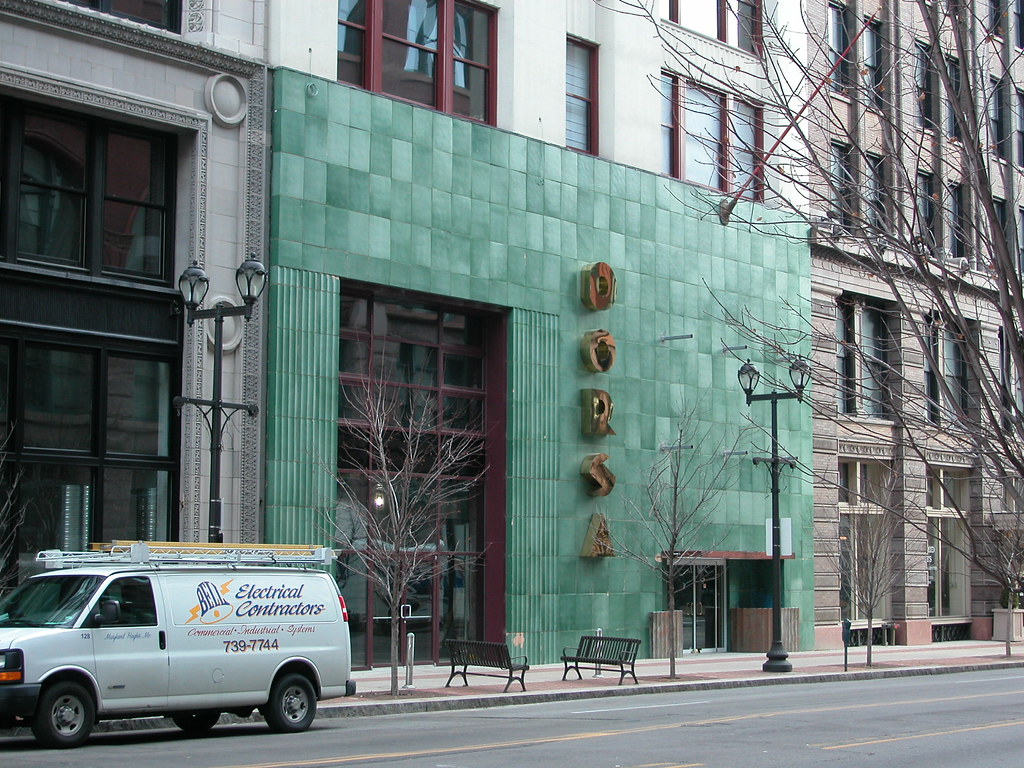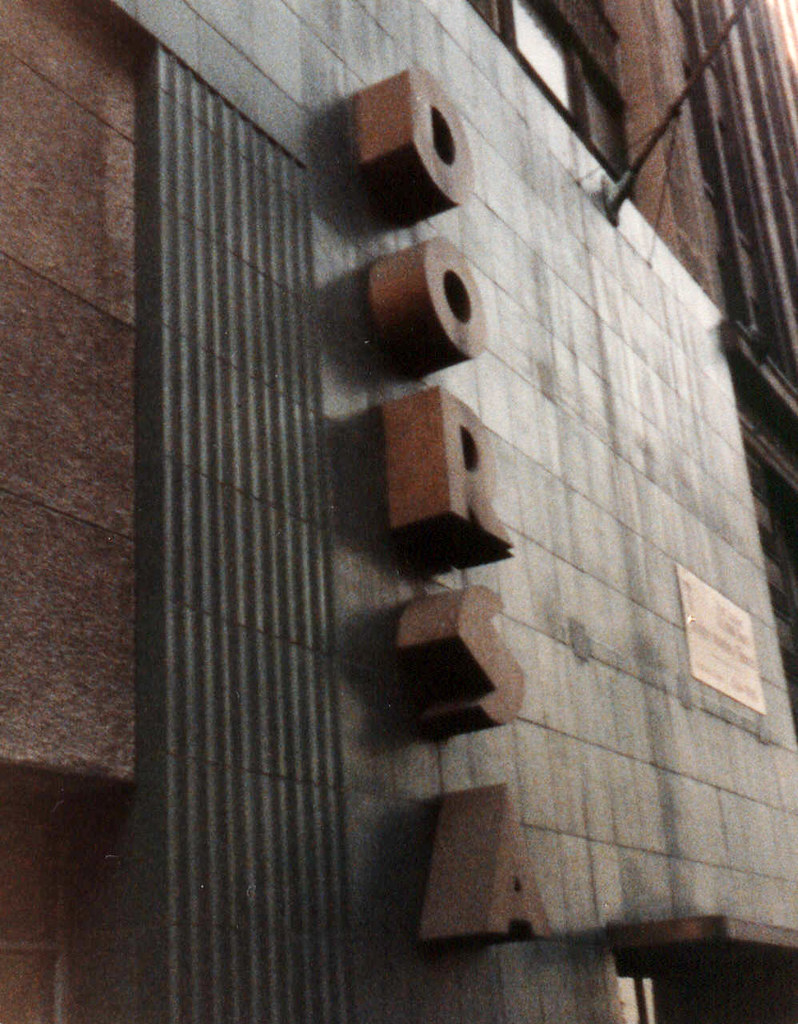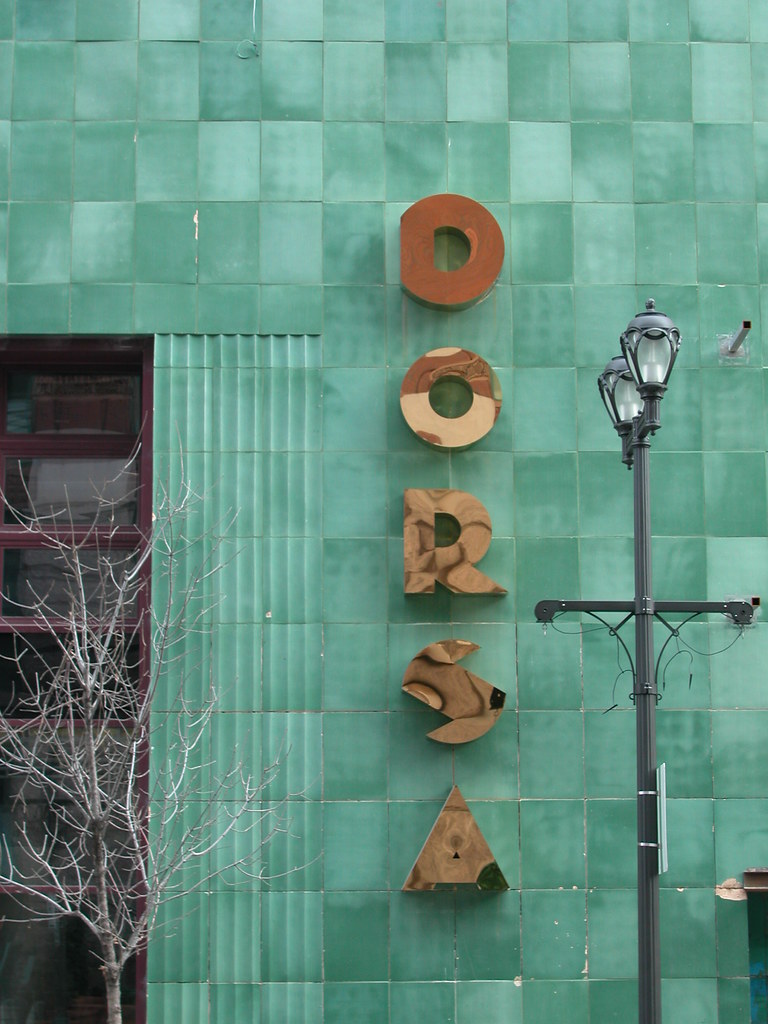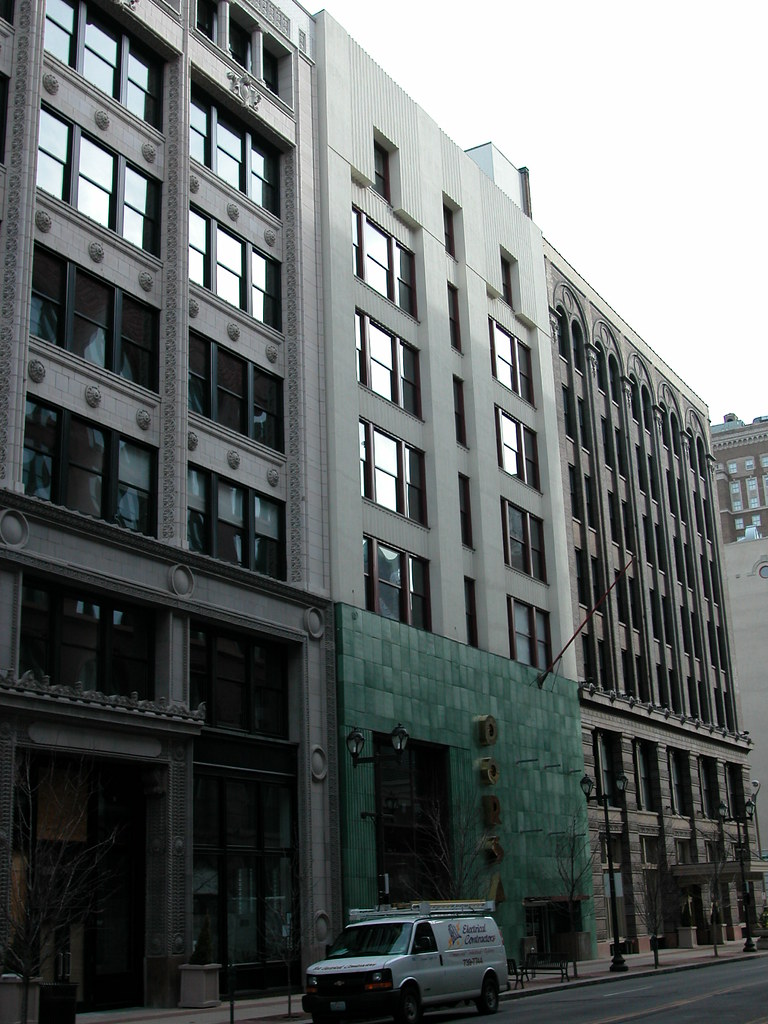 Installation of the letters is part of the rehabilitation of the building being undertaken by the Pyramid Companies. The building and its neighbor to the west are being converted into condominiums. Paul Hohmann, chief architect for Pyramid Architects, is the designer of the Dorsa project who has diligently worked to renew the appearance front elevation.
Installation of the letters is part of the rehabilitation of the building being undertaken by the Pyramid Companies. The building and its neighbor to the west are being converted into condominiums. Paul Hohmann, chief architect for Pyramid Architects, is the designer of the Dorsa project who has diligently worked to renew the appearance front elevation.
The Dorsa Building facade -- literally, this is a facade -- dates to 1946, when the Dorsa Dress Company hired architect Meyer Loomstein to modernize the front elevation of their Classical Revival building, which had been built in 1902 from plans by Eames and Young. Loomstein and sculptor Sasch Schnittman devised a streamline slipcover, with a striking green terra cotta base under a cream stucco body that terminated with elegant fluting at the top. The designers further adorned the building with a large recessed terra cotta "spider web," the stylized brass lettering and three brass fins above the building's understated entrance.
The result was a true rarity for downtown -- a stunning work of Art Moderne commercial architecture that was as colorful as it was smart. The building turned many heads and sold many dresses. Inevitably, the Dorsa fell into disrepair. The upper two fins disappeared, perhaps taking a trip to the scrapyard. In the 1980's and 1990's, owner Larry Deutsch removed the spiderweb and later the letters.
Here is a photograph of the letters in 1984 submitted to EoA by Walt Lockley:
Here are the new letters close up (never mind the clashing lamp post):

Now the building's fortunes are better, although the fate of its sumptuous interior is uncertain. (Read more about the interior in Toby Weiss' 2006 blog entry "The Dorsa, 'The Ultimate in Mode Moderne.'") The new letters are slightly more shallow than the originals, and Pyramid has opted not to return the spiderweb because they need to utilize the natural light that a large glazed opening provides. However, the return of the letters and fins (due to be installed in a few weeks!) at all is laudable. After all, rehabilitation tax credit programs don't demand that elements of the building missing at the time of rehabilitation be returned. (Witness all of the rehabbed loft buildings whose owners have not returned long-gone cornices.)
The Dorsa was fortunate to have a caring architect. The energy of Loomstein's design was apparent even before the return of the letters, but not realized so fully. The Dorsa building wanted to sing its name, and had no voice. Now its melody saunters up the facade in modern splendor.





6 comments:
I'm sorry I missed Toby's piece, I always wondered what happened to the showroom. we had an illegal loft in the building in '87 until Deutsch bought it (right after we spent 3 months gutting our floor). we found our way into the first floor once and yes it's stunning - pictures don't do it justice.
oh yeah and sorry to correct your earlier post it was an almost fully occupied building well before Deutsch bought it - we just didn't have residency permits. the cartoonist/illustrator Heather Macadams lived there on 6 with a Wash U professor (I forget his name), Charles something who opened 1227, the pioneering Wash Ave. night club, had the 8th floor.
I think we paid something like $350(!) for the 7th floor.
it was a lot of fun (we could also easily break into the adjacent and then abandoned buildings, I've never seen floors so warped from years of neglect - by comparison the Dorsa was pristine)
Interesting comments. First loft I saw in STL was in this building. Carol Hodson's, I believe. Maybe the second or third floor? Ah, the dawn of the '90s, those halcyon days...
why is Hodson's name familiar??? I was wrong, please subtract a floor from my memories, - highest was 7, we were on six at that time 3 was a t-shirt silk screen operation that I put in maybe 4 hours of work before saying...you get the point.
God nothing was there in those days except Jimmy T;s, the American Theater and the occasional stoner kids after Laserium.
Carol Hodson, my ex-neighbor in the Dorsa, is a very talented artist and a full-time prof at Webster. She is also, as only someone who lived under her loft can testify so assuredly, an avid ping pong player.
There were no occupancy permits in those days, the phone company wouldn't install residential phones and cable wouldn't connect. Mail delivery depended on the goodwill of the carrier.
Larry Deutsch built my loft, 5,000 sf, in a weekend (one bathroom, two kitchens and two doors) -- and let me furnish it from furniture he had stored in the old Alverne.
PE
PE: that sounds like Larry's MO.
When we were there nobody really expected mail and the few times a month anybody used the front door we'd just distribute the pile ourselves. I don't recall having trouble getting a phone line, but the feeling of remote-ness in the center of a downtown was cool (if sort of sad). we could blast punk rock on the roof in the middle of the day and there was no one around to complain (the roof was also how we got into the other buildings).
Just googled Hodson (cool work), I think I was somehow confusing her with Carol Crudden - and her friends were way over on Locust past Tucker somewhere like 18th.
Post a Comment